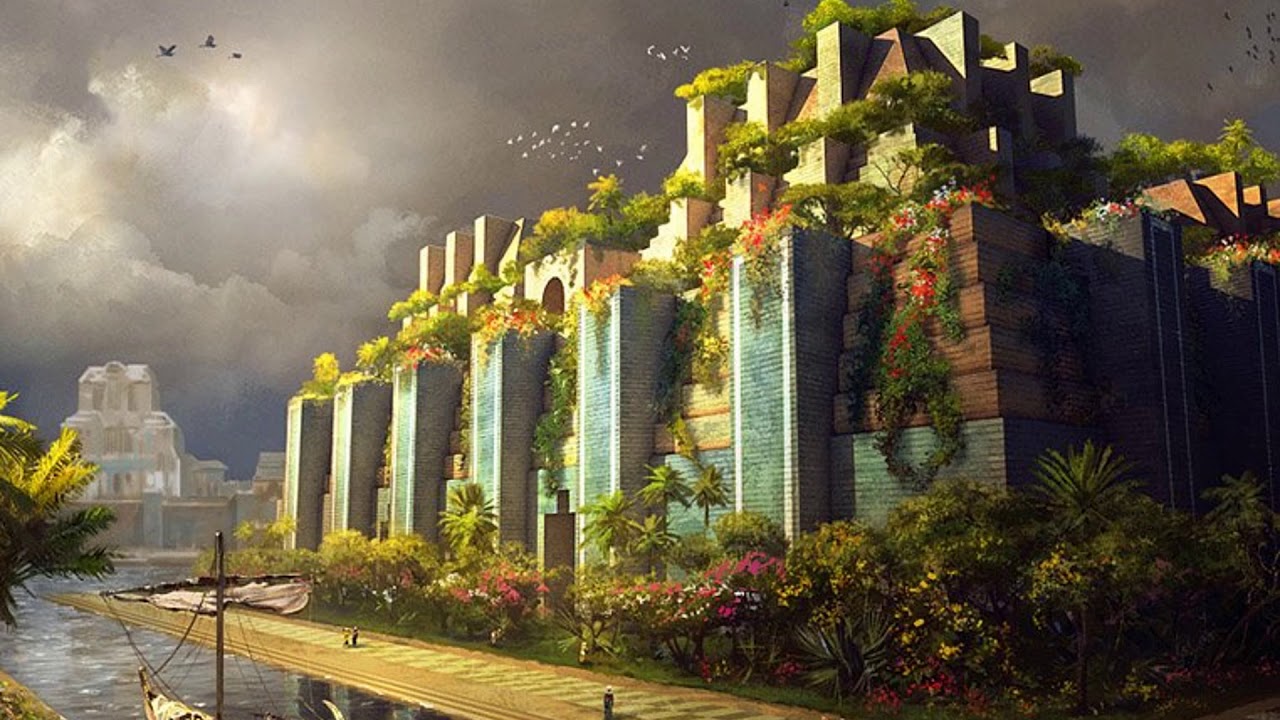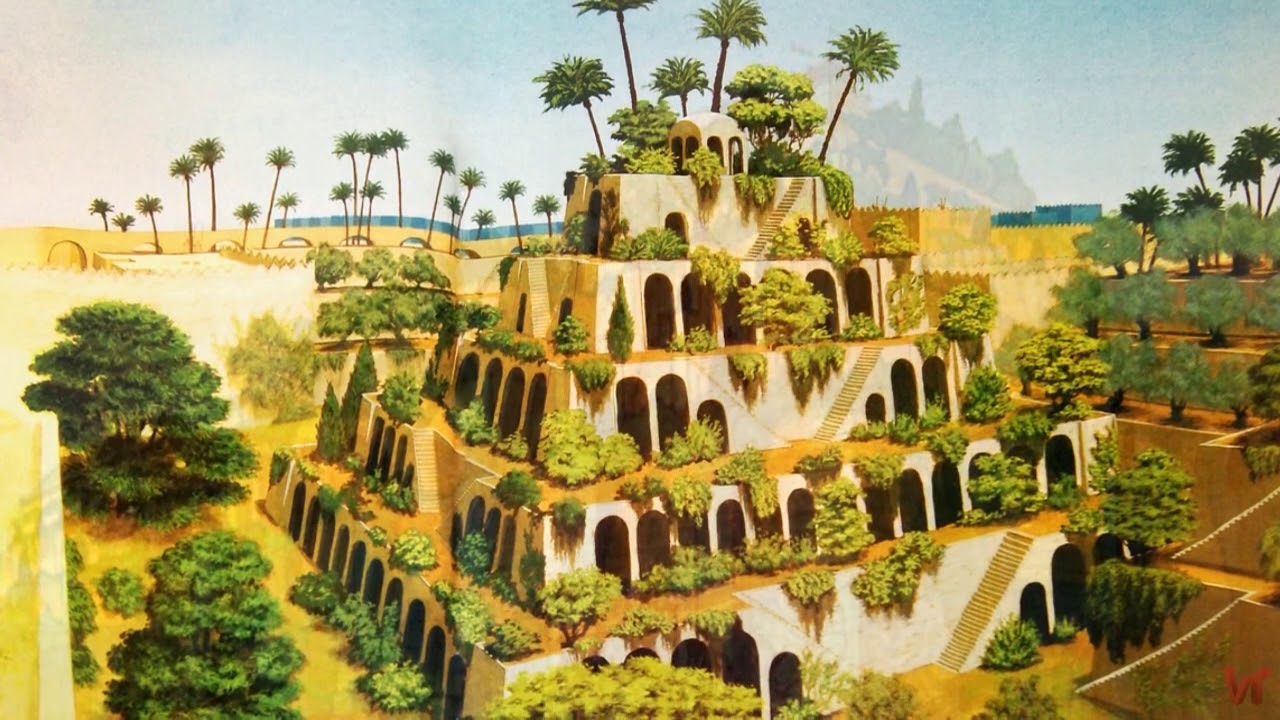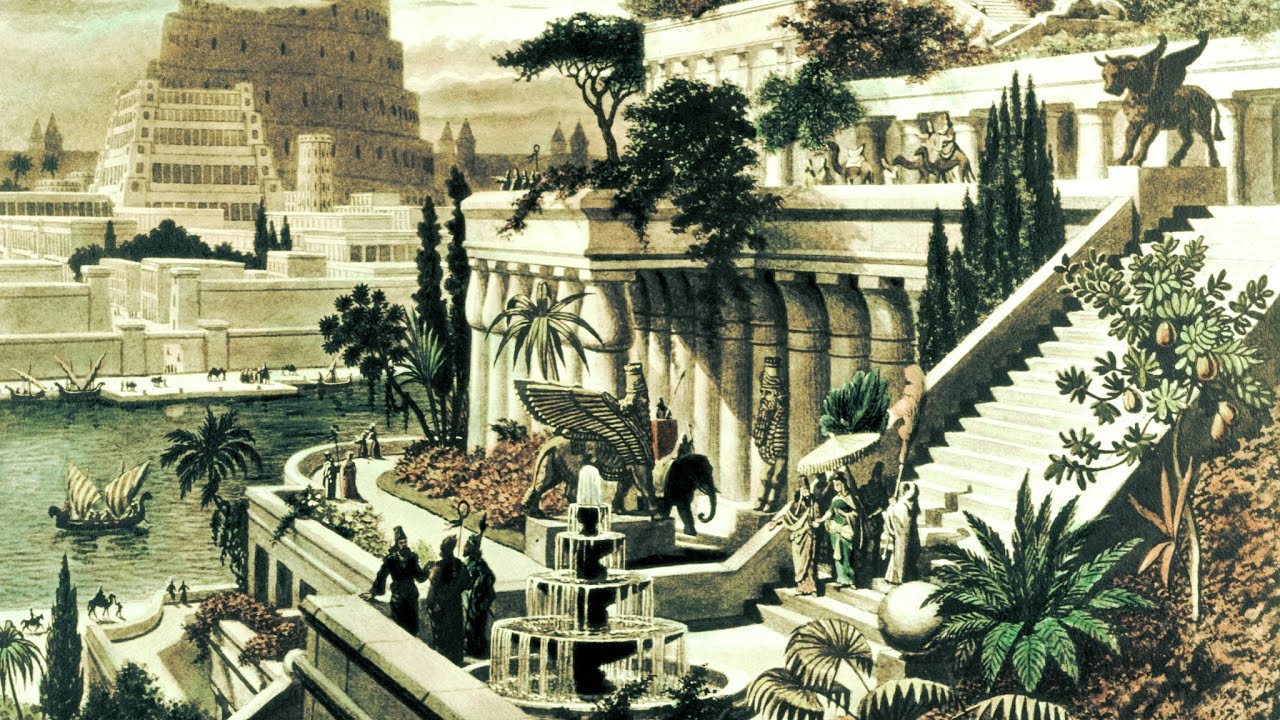Considered one of the Seven Wonders of the Ancient World, the Hanging Gardens of Babylon is also the most controversial place among them because it is described by ancient authors, although studies have found no evidence of its existence. Let’s take a closer look at where the Hanging Gardens of Babylon are and why they disappeared.
You must have heard of the Seven Wonders of the Ancient World, the most beautiful human-made structures throughout history. Of these, only the Pyramid of Giza has survived, but there is archaeological evidence of the existence of the others, except for one; The hanging gardens of Babylon. The Hanging Gardens of Babylon are still a subject of debate among historians even today. because no evidence has been found of its existence.
Even more interesting, it can be found in Babylonian sources or in the memories of those who visited the region at that time. There was no information about the Hanging Gardens of Babylon. The first information about this garden of paradise comes from writers who lived after it. As such, it is believed that this place is at most a legend. Let’s take a closer look at the interesting information about the Hanging Gardens of Babylon and look for answers to the curious questions.
Interesting facts about the Hanging Gardens of Babylon:
- II. Nebuchadnezzar built paradise on earth.
- What was not in the Hanging Gardens of Babylon.
- Here we encounter the first examples of landscape architecture.
- Another name is the Hanging Gardens of Semiramis.
- Historical sources are somewhat mixed on the Hanging Gardens of Babylon.
- It is said to have inspired other gardens as well.
- The Hanging Gardens of Babylon may be the greatest ladyship in history.
- II. Nebuchadnezzar may have been inspired by the Assyrian kings.
II. Nebuchadnezzar built heaven on earth:
It is estimated that the Hanging Gardens of Babylon were built near the city of Babylon, which is located within the borders of Iraq today. The date of construction is the 6th century BC, New Babylonian Empire II. Nebuchadnezzar period. After the throne, II. who wanted to make the city splendid. Nebuchadnezzar had the city surrounded by tens of kilometers of walls adorned with tile ornaments and built a paradise on earth with the Hanging Gardens of Babylon.
What was not in the Hanging Gardens of Babylon:
We learn from the stories that in the Hanging Gardens of Babylon, olive trees, quince trees, common pear trees, fig trees, almond trees, there were common grape vines, date palm trees, tamarisk trees, and Atlas Mountain gum trees.
Even more interesting, the Hanging Gardens of Babylon are not only grown in the region, but It was also planted from imported trees. Among these, we can count willow, cedar, walnut, cypress, myrrh, ebony, fir, pomegranate, ash, plum, oak, rose, beech and moray eel. Each of these was irrigated by special waterfalls.

Here we encounter the first examples of landscape architecture:
There were many advanced civilizations at that time and people were making such gardens. However The Hanging Gardens of Babylon were one of the first gardens built for pleasure, not cultivation. Pleasure gardens were becoming more and more common in the Hellenistic period, and this garden also followed the trend.
In addition to flowers and plants, the Hanging Gardens of Babylon had statues and waterfalls. All these were placed on the terraces in a special order. and it gave the feeling of a different world to those who saw it, rather than a garden. They say that even the aesthetic sense of Mesopotamian civilizations is based on the Hanging Gardens of Babylon.
Also known as the Hanging Gardens of Semiramis:
The Hanging Gardens of Babylon in the 6th century BC. Although it is generally believed that it was built by Nebuchadnezzar, according to some greek stories This place was built in the 9th century BC by a legendary female ruler, Semiramis. For this reason, it is seen as the Hanging Gardens of Semiramis in some sources.

Historical sources are a bit mixed on the Hanging Gardens of Babylon:
Herodotus, who visited the region in the 5th century BC, praised the Babylonian irrigation system and its walls, but no mention of such a charming garden. The Hanging Gardens of Babylon were mentioned for the first time in the work of a Babylonian priest, dated 290 BC, written after he moved to the Greek islands.
When we look at the works of the 4th century BC, we see the Hanging Gardens of Babylon, but these people He neither visited Babylon nor had any horticultural knowledge. The Greek historian Diodorus Siculus made a detailed description of the gardens in the 1st century BC. The Greek geographer Strabo also describes how water was drawn from the Euphrates to irrigate the gardens.
It is said to have inspired other gardens:
Even though the historical reality of the Hanging Gardens of Babylon is debatable, it is a fact that it inspired humanity. For example The garden built by Cyrus the Great in 530 BC on the Zargon Mountains, It was built with a similar terrace method. The trees in the garden were clustered to protect them from the scorching wind, irrigation was done by special terraces, and the necessary shade was provided by the high walls.
In fact, there is always a relationship between the garden and the palace. In addition to examples seen in ancient China, Even in ancient America, that is, in Mesoamerica This relationship is clearly visible. Moreover, it is more illogical that such a garden was not established in a city like Babylon, which was built on the banks of the Euphrates.

The Hanging Gardens of Babylon may be the greatest ladyism in history:
New Babylonian King II. You may be wondering why Nebuchadnezzar went and had a huge garden built. Of course, he had the aim of developing the city of Babylon. but the greater purpose, was to make his wife, Queen Amytis, happy.
Nebuchadnezzar, after ascending the throne, to the neighboring empire He married Amytis to strengthen his friendship with the Medes. But Babylon was nothing like the lush nature of the Median lands. Thereupon, Nebuchadnezzar tried to lessen the longing for the homeland of his wife, whom he fell in love with, by having the Hanging Gardens of Babylon built.
II. Nebuchadnezzar may have been inspired by the Assyrian kings:
There is no historical source about the Hanging Gardens of Babylon and We said that archaeologists could not find any evidence of its existence in the studies they carried out in the region. However, when we examine the historical process, we can say that the Hanging Gardens of Babylon may have been inspired by these, since we know that the Assyrian kingdoms established in the region had similar gardens built.
When the Akkadian inscriptions are examined, he lived in the 8th century BC. We see that the Assyrian king Sanherib had a garden built similar to his palace in Nineveh. Even the following text was found when the aqueducts in the region were examined;
‘The king of the world of Assyria, the king of Sanherib. Far away, I had a watercourse connecting the waters, directed around Nineveh… I created an aqueduct of white limestone blocks over steep valleys, and I let those waters flow over it.’
Considered one of the Seven Wonders of the Ancient World We talked about interesting information about the Hanging Gardens of Babylon. It is not known whether it is a legend or a dream, but it is nice to imagine that such a garden has been established in such arid lands.
